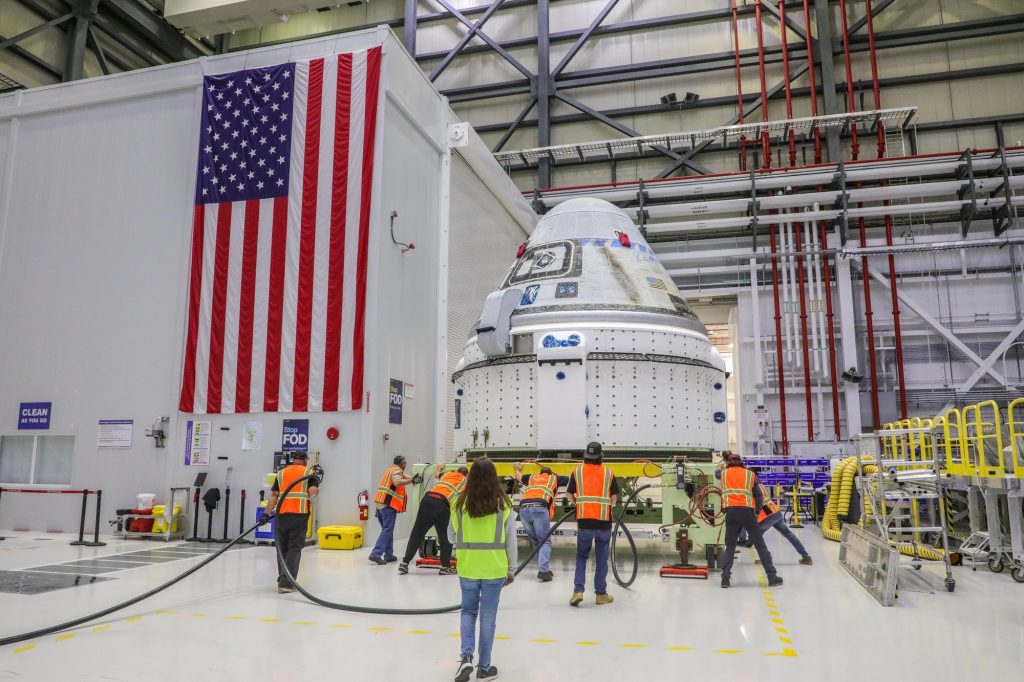NASA and Boeing are working on the first crewed flight of the CST-100 Starliner spacecraft in early May, the last step before the vehicle is approved for regular flights to the International Space Station.
During a series of briefings on March 22, NASA and Boeing officials said that preparations for the Crew Flight Test (CFT) mission are going well, with a launch planned for no earlier than May 1. The schedule is influenced by the ISS manifest of visiting vehicles. The mission was delayed from late April due to the ISS manifest of visiting vehicles earlier this month..
This mission will bring NASA astronauts Butch Wilmore and Suni Williams to the station, where they will stay for about eight days before returning to land in the southwestern United States. The flight will occur almost two years after a second uncrewed flight test, OFT-2, that also docked with the station.
Mark Nappi, vice president and Starliner program manager at Boeing, mentioned that the CFT flight will introduce crew into the vehicle systems, so many of the flight test objectives focus on how that interface will work. The main goal is to verify if the vehicle performs as expected with humans involved.
The test objectives include evaluating the performance of the spacecraft's life support systems and using manual controls to operate the spacecraft if automated systems fail. Wilmore and Williams will test the ability to manually control and orient the spacecraft during a day-long flight to the ISS, and test maneuvering during a 6.5-hour trip from the station back to the ground.
Wilmore described the CFT as a test pilot's dream, emphasizing that everything they're doing is from start to finish.
CFT will be the final major milestone before NASA officially certifies the spacecraft for crew rotation flights, starting with the Starliner-1 mission in early 2025.
The certification is expected to be completed in November or December, unless any issues arise during the CFT. Stich, the NASA commercial crew program manager, stated that it needs to happen in that timeframe to meet the spring slot for Starliner-1.
Stich mentioned that NASA was finalizing a few certification items for CFT, such as completing the review of data from a parachute test earlier this year that verified a redesigned 'soft link' which was a factor in delaying the mission from last year, and finishing analyses of abort modes. He added that neither seemed to pose a risk of further delays.
NASA wants to get Starliner into operational missions, despite the years-long delay, to ensure redundancy in access to the ISS, complementing SpaceX's Crew Dragon. Dana Weigel, NASA ISS deputy program manager, expressed excitement about getting the first crewed Boeing Starliner mission to the space station. She highlighted the goal of having multiple vehicles for crew transportation to the station.
Nappi stated that Boeing is focused on getting Starliner ready for NASA, fulfilling a contract for six ISS flights awarded nearly ten years ago, and is not currently looking at other private missions for the spacecraft. He mentioned that private astronaut missions may be considered later in the decade, but only after the operational missions start.
One of the individuals who has been waiting the longest for CFT is Williams, who was selected by NASA in 2015 to train for the first commercial crew missions. “It’s been a bit of a timeline” to get to this point just before launch, she said at the briefing, but agreed with Wilmore that flying this mission is a “test pilot’s dream” for her. “I don’t think I would really want to be in any other place right now.”









